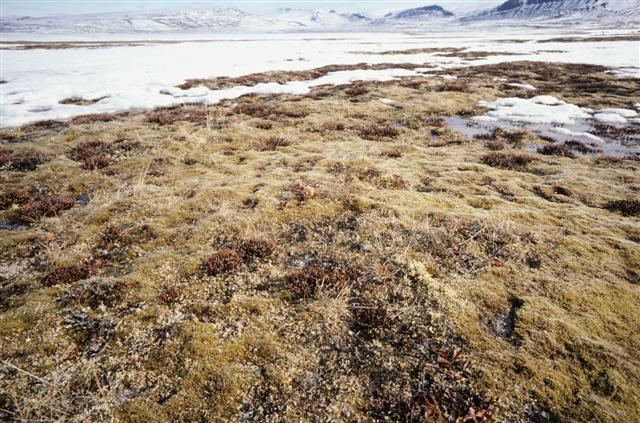The Institut National de la Recherche Scientifique, Québec, CANADA, is now advertising 3 PhD projects on permafrost thawing.

General Description
The general objectives of our team are to i) quantify the influence of turbulence, thermal structure, oxygen, carbon and nutrient concentrations, and activity of GHG producers and consumers on the emissions of GHG by ponds and lakes associated to permafrost thawing in arctic and subarctic regions, ii) determine how climatic conditions, permafrost thawing, primary production and light regime are affecting GHG emissions through their action on the spatial organization and lability of carbon, and on limnological conditions and microbial activity, and iii) establish if GHG emissions from these ecosystems have the potential to represent a positive feedback mechanism on climate, or in other words if its the old carbon mobilized by permafrost thawing or the young carbon recently fixed by plants and algae that predominantly fuel microbial respiration.
Criteria
The student will have to hold a university degree in biology, ecology, microbiology (PhD 1&2) or molecular biology (PhD1). An experience in limnology or oceanography, basic knowledge in physics or chemistry, and fieldwork experience in the North are assets.
Direction
Prof. I Laurion, INRS, Univ Quebec, Canada
Collaborators
C. Lovejoy, U. Laval (PhD1), M. Rautio, UQAC (PhD2), W.F. Vincent, U. Laval (PhD3).
Description of the projects
PhD1 - Seasonal variations in flux and pathways of methane production and consumption in small thaw lakes
Studies show the importance of GHG emissions at spring thaw and during the autumnal overturn period, when gases stored under the ice cover in winter or in the hypolimnion in summer are released to the atmosphere. Moreover, the methane coming from winter ebullition (lakes with talik) could dissolve in water underneath the ice cover, and be converted to CO2 by methanotrophic activity before spring thaw. The availability of the different carbon pools to microbial degradation can also vary seasonally (e.g., as a function of primary production, peat erosion or hydrology), as well as with limnological conditions (e.g., as a function of oxygen content or microbial photostimulation), which can control methanogenic and methanotrophic activity. We will test the hypothesis that spring is a critical period for CH4 emissions, a period when the emitted carbon is the oldest and mainly coming from hydrogenotrophy, while it is during the summer peak of primary production that acetotrophy and methanotrophy are most active. This will be tested by quantifying CH4 production and consumption genes, and characterizing CH4 and CO2 stable isotopes, limnological properties and organic matter at strategic seasonal periods between spring thaw and autumnal mixing.
PhD2 - Priming effect on terrestrially-derived carbon mobilized by permafrost thawing in small lakes
The expected stimulation of primary production with climate warming could bring more labile carbon to arctic aquatic systems, and accelerate the consumption of allochthonous carbon coming from peat decomposition associated to permafrost thaw, leading to higher greenhouse gas production through priming effect. We will test the hypothesis that priming effect significantly increases the mineralization of allochthonous organic matter, but also increase the proportion of young carbon emitted as greenhouse gases. A series of experiments will be conducted incubating under ambient conditions different proportions of leachates produced from young and old carbon for hours to days, and during which specific biomarkers and chromophoric dissolved organic carbon will be analyzed using state-of-the-art methods. The CO2 produced will be collected at the end of incubation for 14C dating.
PhD3 - Sunlight effects on the carbon mobilized by permafrost thawing in small lakes
Sunlight plays a dominant role on the transformation of dissolved organic matter (DOM), particularly in shallow and humic arctic ponds. This transformation includes: i) direct DOM photomineralization into CO2, ii) partial photooxidation producing less labile compounds, iii) stimulation of microbial utilization of partially photo-oxidized compounds, and iv) dark bacterial mineralization. We will test the hypothesis that photooxidation significantly accelerates the mineralization of the organic matter mobilized by permafrost thawing, and that climate warming brings a larger production of CO2 through photooxidation. A series of experiments will be conducted in varying permafrost aquatic systems where water will be incubated with or without sunlight, and on sterile on untreated water. These processes will be followed over a few days, measuring CO2, dissolved organic carbon, chromophoric DOM properties, microbial abundance and activity, and water column spectral irradiance. Future changes in mobilized carbon will be modeled through simulation of different scenarios in ice cover, DOM, incident light and mixing regime.
How to apply
Please send your documents in one PDF file here.
- A cover letter
- A complete resume
- Names and contact information for two references
- A copy of published papers
- A list of all publications
- All university transcripts including the most recent one
